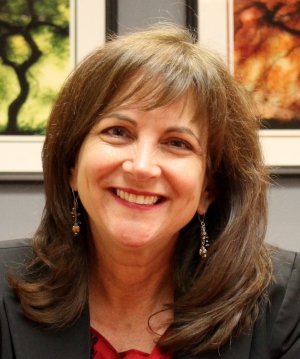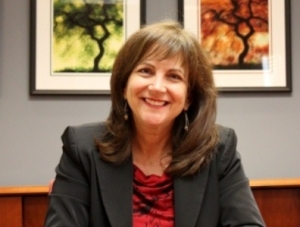The Thief and the Nonprofit; What’s a Board To Do?
According to the National Center for Charitable Statistics (NCCS), more than 1.5 million nonprofit organizations are registered in the U.S. We are proud to represent many such nonprofit organizations operating in the greater Delaware Valley.
These organizations serve the communities in which we live with steadfast passion and dedication. The focus on community improvement, volunteerism and charity is remarkable. We are pleased to play our small part in furtherance of their lofty goals.
Unfortunately, not everyone involved in the nonprofit industry shares the same altruistic philosophy. Invariably, we read newspaper stories about the nonprofit treasurer who diverted funds destined for an ambulance squad or the director that diverted hundreds of thousands from youth athletics programs. The question becomes, what is a nonprofit to do when defalcation is discovered?
Generally, the law imposes no duty upon an individual or organization that discovers a financial defalcation to report the facts discovered to the authorities. Only with respect to certain crimes, mostly involving abuse or child pornography, does a duty to report criminal activity arise. Under current statutory law, no such duty exists upon the discovery of a theft or diversion of nonprofit funds.
Many nonprofits are reluctant to report the defalcation. The negative publicity which follows a public disclosure can be devastating to the credibility of an organization that is already competing for donor dollars. Based on such pressures, for-profit organizations often choose to forego even the private exercise of confronting the accused in an effort to seek recovery preferring instead to simply take steps to ensure the same kind of breach of trust could not be repeated. In the nonprofit world, such private decision making is in sharp contrast to fiduciary duties owed to the organization and the moral, if not legal, duties which are founded in the donor/donee relationship. Moreover, the public nature of nonprofit tax filings may render disclosure inevitable, such that the desired privacy cannot be maintained.
Large nonprofits must file an Internal Revenue Service Form 990 each year. The form summarizes the financial performance of the nonprofit. In turn, every Form 990 that is filed is publicly available with just a few key strokes. The Form 990 requires that the organization report to the IRS whether the organization “became aware of a significant diversion of the organization’s assets” in the current year. Thus, the IRS requires the organization disclose defalcations which amount to a “significant diversion”.
Despite potential negative publicity associated with disclosure of malfeasance in nonprofit administration, the inevitability of disclosure weighs in favor of a more transparent approach. Best practices suggest that the entity’s Form 990 be reviewed by the board of directors prior to submission to the IRS, in fact, the redesigned form asks whether the tax return was furnished to the board for review prior to filing. An astute donor – particularly a business savvy donor - is likely to read the 990 with a critical eye. The worst scenario is that a director or donor becomes aware of the defalcation and subsequently questions the adequacy of management response, potentially a death knell to contributions, and the tenure of the secretive executive director.
In addition, the nonprofit’s auditor, while not required to disclose every fraud in a footnote to the financials, would need to consider whether the theft had a financial impact on the statements. If the dollar amount warranted it, it might have to be reported directly on the statements – either as a line item-loss from fraud or a receivable for repayment of stolen funds.
Further, the question of the directors’ fiduciary duties to the organization in such circumstances has not yet been addressed. Certainly, the directors of a nonprofit, having been placed in a position of trust by the organization, and bear some responsibility for effective management and control. To date, no court has imposed liability upon the directors of a nonprofit for failing to investigate potential recovery, failing to report defalcation, or failing to seek recovery of proceeds unlawfully diverted. While that is certainly not what the volunteer directors sign up for, we can see that case coming.
Navigating the potential exposure requires a complete understanding of financial controls and information, reporting requirements and the composition of the board of directors. Generally, the best advice is to conduct a complete investigation, proactively adopt whatever policies are necessary to prevent a re-occurrence, and report the bad actor to the relevant authorities. Such actions would certainly satisfy any duty to the organization.
Best Practices: Background Checks for Nonprofit Board, Staff and Volunteers
Reprinted by permission of Catalyst Center for Nonprofit Management. Further duplication without permission is prohibited.
Childhood victimization and other abuses of our most vulnerable citizens unfortunately remain a much too prevalent and tragic issue of our times. Particularly offensive is the possibility of physical or emotional abuse of those susceptible because of age, disability or circumstance while receiving services of a nonprofit. Safety efforts to protect the very people being served by a nonprofit, regardless of size, must be constantly monitored.
Even the smallest nonprofit should adopt safety-related policies based on nationally recommended guidelines developed by experts. Such policies and guidelines help protect both the recipients of the nonprofit’s services and the integrity of the nonprofit’s programs. Every nonprofit that serves children and youth has the obligation to exercise “reasonable due diligence” with regards to screening as part of its hiring and vetting programs for members of the nonprofit’s Board, staff and volunteers. Without such screening or gate-keeping vigilance, the very people the nonprofit is trying to serve are more likely to be unprotected and the reputation of the nonprofit (not to mention its fiscal health) are at unnecessary risk.
Private Foundations and New Regulations Regarding Program-Related Investments
As the calendar year comes to a close, all corporate entities, profit and nonprofit, look to their books and make end of year decisions to best avoid the pitfalls of the clear and concise (NOT!) Internal Revenue Code (the “Code”). Private foundations have a unique challenge in their efforts to avoid excise taxes which are imposed on them, as well as their managers, in accordance with Section 4944(a)(1) of the Code if it is found that such foundations made investments that jeopardize the private foundation’s exempt purposes. Such “jeopardizing investments” generally occur when foundation managers fail to exercise ordinary business care and prudence, under the facts and circumstances prevailing at the time of making the investment, in providing for the long and short term financial needs of the private foundation.
On May 21, 2012 the Service published proposed regulations that provide nine new examples of types of private foundation investments that qualify as Program Related Investments (“PRIs”). PRIs are not classified as investments which jeopardize the carrying out of exempt purposes of a private foundation because they possess the following characteristics:
a. have as the primary purpose the accomplishment of one or more charitable or educational purposes defined by Section 170(c)(2)(B) of the Code;
b. do not have as a significant purpose the production of income or the appreciation of property; and
c. do not further one or more of the purposes described in Section 170(c)(2)(D) of the Code (relating to prohibited political activities and lobbying).
To be certain both the foundation and the recipient of the PRI are on the same page (and to also prove the foundation is exercising “expenditure responsibility” to the Internal Revenue Service), a private foundation must secure a written commitment from the recipient of the PRI which specifies the purpose of the investment and contains an agreement by the organization:
a. to use all amounts received only for the purposes of the investment and to repay any amount not used for these purposes back to the foundation, provided that, for equity investments, the repayment is within the limitations concerning distributions to holders of equity;
b. to submit, at least once a year, a full and complete financial report together with a statement that it has complied with the terms of the investment;
c. to keep adequate books and records and to make them available to the private foundation; and
d. not to use any of the funds to carry on propaganda, influence legislation, influence the outcome of any public elections, carry on voter registration drives or make grants that do not comply with the requirements regarding individual grants or expenditure responsibility.
Examples of acceptable PRIs in the proposed new regulations are based on published guidance and on financial structures that had previously been approved in private letter rulings. The regulations do not modify the existing regulation but illustrate certain principles and current investment practices. Where the examples in the older regulations focused on domestic situations principally involving economically disadvantaged individuals in deteriorated urban areas, the new examples include a broader range of opportunities that might be presented to a private foundation.
The new examples demonstrate that a PRI may accomplish a variety of charitable purposes, such as advancing science, combating environmental deterioration and promoting the arts. Several examples also demonstrate that an investment that funds activities in one or more foreign countries, including investments that alleviate the impact of a natural disaster or that fund educational programs for individuals in poverty, may further the accomplishment of charitable purposes and qualify as a PRI. One example specifically illustrates that the existence of a high potential rate of return on an investment does not, by itself, prevent the investment from qualifying as a PRI. Another illustrates that a private foundation’s acquisition of an equity position in conjunction with making a loan does not necessarily prevent the investment from qualifying as a PRI and two examples illustrate that the private foundation’s provision of credit enhancement (such as a deposit agreement or a guarantee) can qualify as a PRI.
As a result of the new examples, the Service has made it clear that the recipients of PRIs do not need to be within a charitable class if they are the instruments for furthering a charitable purpose.
Thus, an investment in a for-profit that develops new drugs may qualify as a PRI if the for-profit business agrees to use the investment to develop a vaccine distributed to impoverished individuals at an affordable cost. Similarly, the purchase of equity in a benefit corporation or L3C that engages in the collection of recyclable solid waste or a below market rate loan to allow a social welfare organization formed to promote the arts purchase a large exhibition space may each also qualify for a PRI from the right foundation.
The new regulations should provide private foundation boards and managers in the second half of 2012 with the additional assurance they needed to make PRIs not only to traditional non-profits but to for-profit, benefit corporations and L3Cs with an articulated social enterprise consistent with the foundation’s exempt activities. Rejecting traditional boundaries between nonprofit and for-profit sectors, the PRI regulations can help encourage the most creative business minds achieve ‘double bottom line’ (financial and social) and sometimes ‘triple bottom line’ (financial, social and environmental) results. By expanding the base for PRIs, we move beyond traditional conception of society as divided neatly into three sectors (business, nonprofit and government) help develop a new forth sector that encompasses elements of both business and nonprofit sectors.























